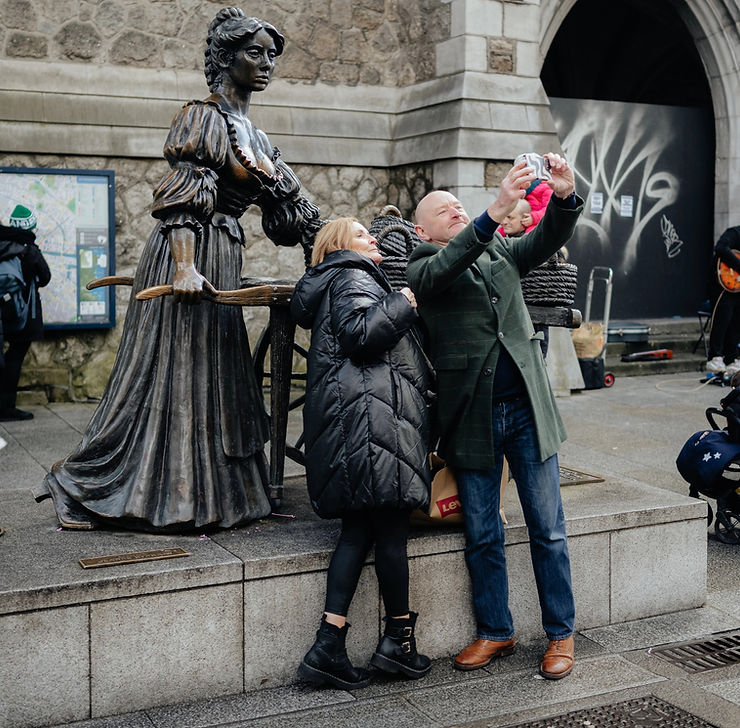International Women’s Day 2024 | Celebrating Women in the Arts
We’re not just focusing on one Irish figure this week but rather a collection of a few. These women of Ireland have led fascinating lives leaving a trail of influence and paving a way for women across the country to grow and fight for equality.
Literature
Edna O’Brien is an acclaimed Irish novelist, playwright, and short story writer, born December 15th 1930 in Tuamgraney, County Clare. She is renowned for her bold and lyrical exploration of themes such as sexuality, societal issues, and Irish identity.
Her famous novel “The Country Girls” released back in 1960 caused a sensation with its portrayal of female sexuality and societal constraints.
“The Country Girls” was the first novel in a trilogy that followed the lives of its protagonists, Kate and Baba, as they navigated the challenges of growing up in conservative rural Ireland. O’Brien’s depiction of women’s experiences in a patriarchal society marked her as a trailblazer in Irish literature.

Throughout her prolific career, O’Brien has continued to explore complex themes and characters with depth and sensitivity. Her works often address issues such as the role of women in society, the tension between tradition and modernity, and the search for personal freedom and identity. Notable novels include “The Lonely Girl”, “Girls in Their Married Bliss”, and “The Little Red Chairs”, which was shortlisted for the Bailey’s Women’s Prize for Fiction.
In addition to her novels, O’Brien has written numerous plays, screenplays, and short stories, showcasing her versatility as a writer. Her writing is characterised by its lyrical prose, vivid imagery, and keen insight into the human psyche. O’Brien’s contributions to literature have earned her numerous awards and honours, including the Irish PEN Lifetime Achievement Award and the PEN/Nabokov Award for Achievement in International Literature.
Beyond her literary achievements, O’Brien has been a vocal advocate for social justice causes, including women’s rights and the plight of refugees. Her courage in tackling taboo subjects and speaking out against injustice has made her a revered figure both in Ireland and around the world. As one of Ireland’s most celebrated authors, Edna O’Brien’s legacy continues to inspire and resonate with readers of all backgrounds.
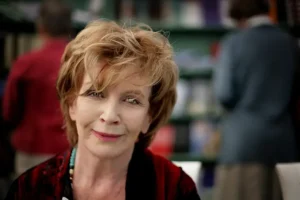
Visual Arts
The visual arts in Ireland have also been enriched by the talents of women such as Mainie Jellett. A pioneer of modern art in Ireland, Mainie Jellett (1897–1944) was a pioneering Irish artist known for her significant contributions to the modern art movement in Ireland. Born in Dublin, Jellett studied at the Metropolitan School of Art in the capital and later at the Académie Moderne in Paris, where she was exposed to avant-garde art movements such as cubism.
Jellett was instrumental in introducing cubism to Ireland in the early 20th century, becoming one of the countries foremost exponents of the movement. She embraced the principles of cubism, which emphasized the fragmentation of form and the exploration of multiple perspectives, to create bold and innovative works of art.
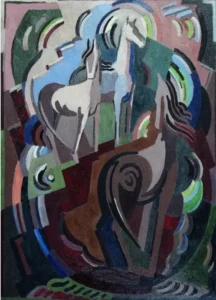
Jellett’s paintings often featured geometric shapes, bold colours, and abstract compositions, reflecting her fascination with form and space. She applied cubist techniques to traditional Irish subjects, such as landscapes and figures, infusing them with a modern sensibility and a sense of dynamism.
One of Jellett’s most famous works is “Decoration”, a mural commissioned for the Irish pavilion at the Paris International Exhibition. The mural, which embodies the principles of cubism and abstraction, garnered international acclaim and solidified Jellett’s reputation as a leading figure in the Irish art world.
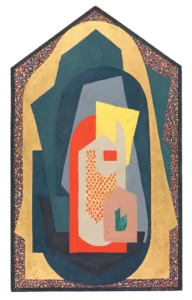
In addition to her artistic pursuits, Jellett was also involved in promoting modern art in Ireland. Alongside fellow artist Evie Hone, she founded the Irish Exhibition of Living Art in 1943, which provided a platform for contemporary Irish artists to showcase their work.
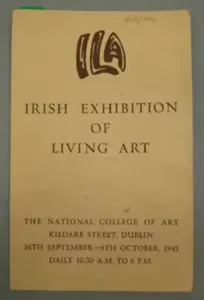
Music
Irish women have made significant contributions to the world of music, both traditional and contemporary. One notable figure is Sinead O’Connor, whose contributions to music we could speak endlessly of.
Sinéad O’Connor was an Irish singer-songwriter known for her powerful vocals, distinctive voice, and fearless approach to music and activism. Born on December 8th 1966 in Dublin, she rose to prominence in the late 1980s and early 1990s with a string of critically acclaimed albums and iconic performances.

Sinead O’Connor gained widespread recognition with her album, “I Do Not Want What I Haven’t Got”, which featured the hit single “Nothing Compares 2 U.” The song’s haunting melody and O’Connor’s emotive delivery catapulted her to international stardom, earning her multiple Grammy nominations and topping charts around the world.
Throughout her career, O’Connor defied categorisation, blending elements of rock, pop, folk, and traditional Irish music to create a unique and eclectic sound. Her music is characterised by its raw honesty, introspective lyrics, and impassioned performances, earning her a devoted fan base and critical acclaim.
In addition to her musical achievements, O’Connor is known for her outspokenness and activism on social and political issues. She has been a vocal advocate for causes such as women’s rights, LGBTQ+ rights, and the fight against child abuse. O’Connor’s willingness to speak truth to power and challenge deep societal issues has sometimes courted controversy, but it has also earned her respect as an artist with integrity and conviction.

Over the years, O’Connor released numerous albums, including “The Lion and the Cobra”, “Universal Mother”, and “I’m Not Bossy, I’m the Boss”. Her discography reflects a diverse range of influences and themes, from personal struggles to broader social commentary.
Despite facing personal and professional challenges throughout her career, including struggles with mental health and criticism from the media, she remained a resilient and influential figure in the music industry. Sinead O’Connor passed away on 26th July 2023 but her music continues to resonate with audiences around the world, and her legacy as a fearless artist and activist endures.
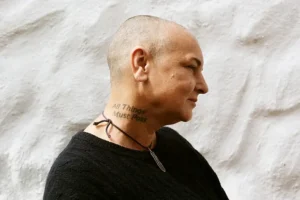
Theatre
In the realm of theatre, women have made significant strides as playwrights, directors, and performers. Marina Carr stands out as a leading voice in contemporary Irish theatre.
Marina Carr is an esteemed Irish playwright known for her powerful and evocative works that explore themes of family, identity, and the human condition. Born in 1964 in County Offaly, Carr has made significant contributions to contemporary Irish theatre with her thought-provoking plays and lyrical language.

Carr’s plays often delve into dark and complex subject matter, drawing inspiration from mythology, literature, and Irish history. She is celebrated for her ability to create vivid characters and haunting narratives that resonate with audiences long after the curtain falls.
One of Carr’s most acclaimed works is “By the Bog of Cats”, a modern reimagining of Euripides’ tragedy “Medea” set in rural Ireland. The play explores themes of abandonment, betrayal, and revenge through the eyes of its protagonist, Hester Swane, a woman on the margins of society. “By the Bog of Cats” received widespread praise for its poetic language, emotional depth, and haunting atmosphere, solidifying Carr’s reputation as a leading voice in contemporary Irish theatre.
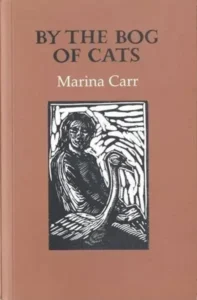
Another notable play by Carr is “Portia Coughlan”, which tells the story of a woman haunted by the memory of her twin brother who drowned years earlier. The play delves into themes of grief, guilt, and the search for redemption, offering a searing exploration of the human psyche.
In addition to her original works, Carr has also adapted classic texts for the stage, including “Hecuba” and “The Trojan Women”, both of which were commissioned by the Royal Shakespeare Company.
Carr’s contributions to Irish theatre have earned her numerous awards and accolades, including the Susan Smith Blackburn Prize and the E. M. Forster Award from the American Academy of Arts and Letters. Her plays are regularly performed around the world and have been translated into multiple languages, highlighting the universal appeal of her storytelling.
Marina continues to captivate audiences with her powerful dramas and lyrical prose. Her work serves as a testament to the enduring power of theatre to provoke thought, stir emotions, and illuminate the human experience.
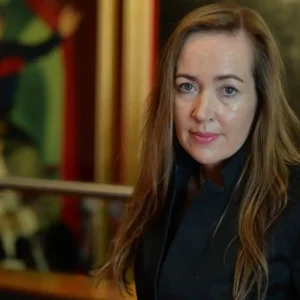
The history of women in the arts in Ireland is a testament to their resilience, creativity, and enduring impact. From literature to visual arts to music Irish women have defied expectations and carved out space for their voices to be heard. As we celebrate their achievements and contributions, it is essential to recognise the ongoing need for gender equality in the arts and to continue championing the work of women artists in Ireland and beyond. Through their artistry and vision, these women have enriched our cultural heritage and inspired generations to come.

